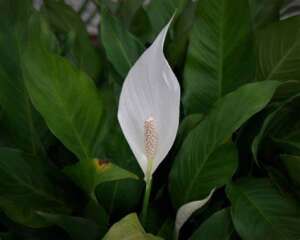Table of Contents
 Once every year, lilies grow in many gardens in the early summer and midsummer seasons. Lilies are perennial plants, and they grow out of their bulbs. During the season, you can locate multiple gardens around you, filled with different exotic, and beautiful colors of lilies.
Once every year, lilies grow in many gardens in the early summer and midsummer seasons. Lilies are perennial plants, and they grow out of their bulbs. During the season, you can locate multiple gardens around you, filled with different exotic, and beautiful colors of lilies.
Many people often get confused if the lilies they grew last year will develop flowers again or not.
The answer to this question is YES!
Lilies grow back after one year, but you have to take extra care of the plant. Lilies demand a particular and favorable environment to develop in their full bloom. Hence, if you want to grow lilies, it is important to know the right time, temperature, season, and environmental conditions.
Many people are earning great amounts of money by growing lilies. If you also want to know all the detailed information about lilies and how they grow every year, Continue reading.
Are Lilies Perennial?
Lilies are perennial flowers. Most of the time, people grow lilies in the autumn season. A little extra care will help you get the flowers from the same plan in upcoming years as well. The stems come out every year to raise new flowers. The flowers of lilies are in a trumpet shape. They usually come with six petals, under multiple shapes such as; red, purple, white, gold, orange, and pink. If you are interested in different types of purple flowers, check detailed guide on Fluerly.
When Do Lily Flowers Bloom?
Lilies usually bloom by the end of summer and early midsummer season. The flowers bloom on the top of the stem annually. You can see the bulb turning into flower petals by this season. The blooming season also depends on the time you planted them. Some people prefer an amalgamation of both early and late varieties of lilies so that they can enjoy the bloom throughout the midsummer till the frosting season.
How to grow lilies so that they come back every year?
If you want to get the lilies back in your garden every year, there are some extra efforts to do. You need to take care of soil condition, bulb, the time you are planting the bulbs, and the environment you need to maintain for the best outcome from a bulb. Let’s discuss every detail one by one.
Find Out The Types Of Lilies

There are multiple types of lilies in the market. First, you need to find out the types that suit them best to your environmental conditions. Asiatic lilies are bright yet shortest among all other types. They bloom in early summer days with fewer fragrances.
Trumpet lilies, on the other hand, are also small and shaped like a trumpeter. The six petals are more close to each other giving the shape of the trumpet but the fragrance of this type is fairly stronger than Asiatic ones. The growth period of these lilies ranges from midsummer to the last days of the summer season.
You may also like: How to Make A Plastic Bottle Garden: Diy Gardening Projects
Another prominent type of lilies is oriental once. They are the most scented ones. They take over a good height of almost 4-5 feet. The flowers of this type start blooming once the Asiatic lilies start decaying petals.
If you are looking for Lillies that can survive better indoors, go for easter ones. As the name reflects, easter lilies play a vital role in indoor home decorations. The plant grows in March and April when the Easter season is the hot topic.
Look At The Quality Of The Bulb
Some people complain that their plant does not produce flowers. One of the main reasons can be the bulb. If you have selected an overcrowded bulb, it can be a disaster. Such types of bulb do not produce many flowers. It is also important to plant the bulb in the right place. It should not be too close to the surface. Usually, people place bulbs deep in the soil.
Soil conditions
Just like other plants need proper soil conditions to bloom at their best, lilies also require it. Lilies grow best if you plant the bulb in acidic soil. The soil pH can be 6.5 at the best. Lilies are perennial plants. The bulb is usually sown deep down at 12 inches in the soil.
However, some types of lilies grow best if the bulb is kept close to the soil surface. When buying the bulb, ask the seller about the soil conditions that best suit the bulb. The bulb of lilies gives rise to stems each year. The stem that comes out of the bulb consists of roots.
Time zones
Lillie can grow in zones ranging from 4-9 usually. However, they also grew in zone 11 and zone 3. The plant is capable of surviving the winter conditions.
Plantation time
Most of the time, lilies bloom in the early and mid-summer seasons. So, ideally, you can plant the bulbs in the soil in the early fall season or early spring season. The flowers come out from March to July, depending upon the type you planted in your garden.
Sun exposure
The best time to plant lilies is in early fall and spring, so you can plant them in areas where they get complete sun exposure. If it is in a pot, keep the pot in the direction of the sun. The lilies grow best in the sun. However, if direct sun exposure is not possible in your case, try to keep the plant under a partially shady area which at least gets daylight anyway.
What Is The Best Way To Care For Lilies?
Lilies need full sun and well-drained soil with a pH between 5 and 7. Water freely and apply a high-potash liquid fertilizer every 2 weeks during the growing season (April through September). Wait to fertilize after September 15, or you might encourage growth that will rot during cold weather.
To extend their flowering period, plant lilies in pots so you can bring them inside when frost threatens your garden. Set them in strong sunlight in a spot where they will receive no direct sun from October until March or April when temperatures rise above 50 degrees Fahrenheit (10 degrees Celsius).
Ways To Care About Lilies
- First, choose the right variety of lilies for your climate zone. You don’t want to plant Oriental lilies if you live in the northern U.S. because they tend to get leggy and fall under the weight of their blooms.
- Plant lilies in areas that receive at least six hours of sunlight daily.
- Choose the right variety based on your climate. For example, Peace Lily plants are suitable for growing in areas with cooler temperatures and may bloom less often or as brightly if planted in warmer climates.
- Plant bulbs in fall or spring, but wait until the soil reaches 50 degrees Fahrenheit (10 degrees Celsius). Water the plants well after planting, but avoid overwatering them by allowing the soil to dry out between waterings.
- Deadhead spent blooms once they have faded and turned brown.
Do not add excessive fertilizers
Just like other plants, lilies do not need a lot of fertilizers. Fertilizers such as nitrogen are good but to a certain extent. If you try to provide excessive nitrogen to lilies. They can result in the rotting of the bulb. It also weakens the stem of the lily plant which can ultimately cause complete damage to the plant.
Lilies: Diseases and Threats
Lilies are a beautiful addition to any home garden. They produce beautiful and fragrant flowers, and they are easy to grow. However, there are some diseases that can attack lilies.
Botrytis blight, Botrytis spp
This is the most widespread disease of lilies. It often occurs late in the season when humidity levels are high, and temperatures are warm. It can also occur during propagation or after transplanting if the soil is too wet.
Symptoms
The symptoms are small brown spots on the leaves. The infected leaves will turn yellow and then brown before they fall off. This fungus may also affect the flowers, resulting in small brown spots on them. If a severe infestation occurs, the entire plant can become covered with these spots, which look like moldy patches on the foliage or flowers.
Bulb rot, Rhizopus spp

Bulb rot is a fungal disease that affects lily bulbs and corms (underground stems). Bulb rots cause softening of the bulb tissue so that it becomes mushy and dark brown to black. Sometimes the entire bulb becomes soft and mushy due to infection with this fungus; other times, only part of it is affected by this disease. When only part of a bulb is infected with bulb rot, areas on the surface may not be affected by the disease.
Bulb rot can occur anytime during the growing season or after flowering. Fungal spores infect bulbs when exposed to excessive moisture for long periods or when temperatures and humidity are high. Lilies that are planted too deep will be more susceptible to infection than those planted at the recommended depth.
Symptoms include:
- Mushy, dark brown to black center
- Softening of the outer layers
- Dark brown to black discoloration on the surface
FAQs
Do Lilies Come Back Every Year?
Lilies come back yearly because they have bulbs in the soil that contain food reserves needed for growth and flowering during the spring season when days are longer and temperatures are warm enough for growth. Once they bloom, they stop growing until the following year, when they begin blooming again as temperatures warm up in springtime.
Do Calla Lilies Come Back Every Year?
Yes, calla lilies come back every year. They are perennial flowers, meaning they live for more than one season and can be grown from tubers or bulbs.
The calla lily is popular with gardeners because of its striking beauty and hardiness. It is often used in floral arrangements, but the flowers can also be used in bouquets or cut directly from the plant.
To ensure your calla lilies return yearly, plant them in well-drained soil and provide plenty of sunlight and water. You’ll also want to keep them properly trimmed, so they don’t become overgrown or damaged by pests.
Do Canna Lilies Come Back Every Year?

In general, canna lilies are hardy plants that will return yearly. However, some conditions may affect the longevity of your canna lily.
Canna lilies are tropical plants that grow in warm climates. They prefer full sun with moist soil and will thrive when planted near water sources like ponds or streams. Canna lilies are often used as annuals in colder climates because they can’t withstand freezing temperatures.
If you want to keep your canna lilies around for more than one season, move them indoors during winter. You should also ensure they have enough water and fertilizer throughout the year to avoid drying out or becoming nutrient deficient during flowering.
It’s also important to note that not all species of canna lilies come back yearly—several varieties are classified as perennials instead of annuals.
Do Asiatic Lilies Come Back Every Year?

Yes, Asiatic lilies do come back every year. However, their flowers are not as beautiful as those blooming in the spring. The flowers that bloom in the spring are called “blossoms”; the ones that bloom in the fall are called “fruit.”
The blossoms of Asiatic lilies don’t last long. They usually only last for about a week. But if you cut them off after they’ve finished blooming and put them in water, they’ll grow roots and form new plants. If you leave them alone, they’ll die back after one season.
Do Tiger Lilies Come Back Every Year?

Yes, tiger lilies come back every year. They are perennials, which means they die back to the ground during winter and then return in spring. Tiger lilies bloom in late spring until early summer.
Tiger lilies are also called daylilies and can be found in many colors, including yellow, orange, red, and white. Tiger lilies grow best in partial shade and well-drained soil. To keep them growing well, plant them in early spring after all danger of frost has passed.
Do Easter Lilies Come Back Every Year?

Easter lilies are a member of the Liliaceae family of plants, including other beautiful flowers like the Stargazer Lily. Easter Lilies are some of the most popular flowers because they are easy to grow and bloom all summer. Like most other plants, Easter Lilies must be planted in good soil, fertilized, and watered regularly. They also need plenty of sunlight but only a little heat or humidity.
Easter lilies come back every year because they are bulbs that grow underground. The bulb comprises many layers of fleshy scales that store energy until it’s time for the plant to emerge from its resting period in springtime. Then it sends out shoots that become leaves, stems, and flowers. The flower comprises many petals arranged in a spiral pattern around a center cone shape called an umbel.
When Easter lilies die back in the fall, you can dig up their bulbs carefully with a trowel or shovel and store them over winter in a cool place such as a basement or garage until it’s time to plant them again in the springtime.
Do Peace Lilies Come Back Every Year?

Peace lilies are perennial plants that come back every year. The lily flower grows on a vine reaching up to 50 feet long. The flowers are white and fragrant and bloom during summer. The leaves are green with white spots.
The plant can be propagated from stem cuttings or leaves that fall off the plant. These cuttings will root in water within two weeks and then can be planted in the soil. They can also be planted directly into pots if you want to grow them indoors or in containers outdoors.
Peace lilies prefer partial shade when grown outdoors, but if grown indoors, they need bright light but not direct sunlight. They will grow best if you keep them watered regularly during the summer months and fertilize them once a month with liquid houseplant fertilizer or compost tea.
When should I plant lilies?
Plant bulbs in early fall or late spring.
When should I cut back my lily foliage?
Cut back after blooming has finished.
Are lilies high maintenance?
They are lower maintenance than some people may think. Many types of lilies will come back every year on their own without your intervention!
The lily plant is native to the northern hemisphere, but you can find them growing worldwide.
Do You Have To Dig Up Lilies Every Year?

Late September or early October is the best time to move lilies. This is when they’ve finished blooming, but before they’ve started their winter dormancy period. If you wait too long, they can produce flowers the following year.
Prepare the soil by adding compost and fertilizer (according to package directions) until it’s loose and fluffy. Dig up the bulbs with a trowel or shovel and gently brush off any excess dirt from their roots. Cut off any foliage still attached to them (it will die within a few days). Place each bulb in its plastic bag filled with potting soil, then store them in a dry place until spring arrives.
In springtime, plant your bulbs back into their original spots after all danger of frost has passed (or about one month after snowmelt).
What To Do When Lilies Have Finished Flowering?
You can do several things to prevent lilies from flowering and going to seed. You can cut off the flower heads, which is called deadheading. Deadheading will protect your garden from unwanted seedlings and encourage the plant to keep producing more blooms.
Another option is to cut off the entire stalk at ground level after it has finished blooming. This will not guarantee that your lilies will not go to seed, but it will help reduce the number of produced seeds.
Deadheading lilies should be done immediately after the flowers have faded or died off completely. This will prevent them from going to seed and give new buds time to grow before winter arrives.
Conclusion
Lilies are perennials, and they come back every year if you take care of the plant under the right conditions. Take care of soil condition, sunlight, fertilizers, and the bulb of the plant will reappear in the next year with rooty stems. The sunlight is crucial to lily plants.
Keep the plant under the sun. Dig a deep hole when planting the bulb. Usually, lily bulbs rot if kept too close to the surface of the soil. Follow the time zone for best results. Plant the bulb in the early spring or early fall season. Keep a good balance of fertilizers, especially nitrogen. Excess can rot the bulb and plant consequently.
Related Posts
How Often To Water Basil Plants?

